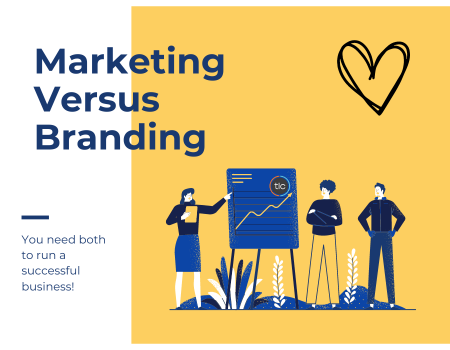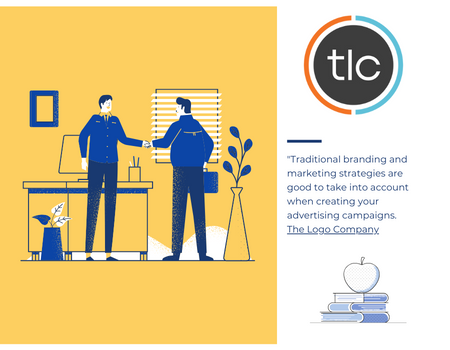Understanding Marketing and Branding
Marketing vs branding! Two actually rather different things even if they are easy to confuse with one another. Its important to know the key differences in marketing and branding to be able to maximise result. Of course there is a relationship between the two and we will explore this together.
Key Differences: Marketing vs. Branding

The Definition Of Marketing
Most of us know that marketing refers to the activities and strategies used to promote and sell products or services to consumers. Sounds easy right? Furthermore, it involves identifying customer needs and desires. More so to be able to create products or services that satisfy those needs.
Some key components of marketing include market research, product development, pricing, distribution, advertising, and sales. Most importantly, the goal of marketing is to attract and retain customers, increase brand awareness, and generate revenue for the business.
Depending on the kind of company that you are promoting, marketing strategies can vary widely. Usually, depending on factors such as the target market, industry, competition, and available resources. However, common marketing tactics include digital marketing, social media marketing, content marketing, email marketing, influencer marketing, and traditional advertising.
The Definition Of Branding
When it comes to branding, the definition is very different from marketing. Branding is the process of creating a distinctive identity and image for a product, service, or company in the minds of consumers. Think of it more like a combination of different elements that define a brand’s personality, values, and reputation.
Furthermore, a strong brand conveys trust, credibility, a good brand name like for example a brand name for a clothing store. Moreover so making it easier for consumers to recognize and choose the brand over competitors. For example, an effective brand strategy can lead to increased customer loyalty, brand advocacy, and premium pricing.
Crucially, key elements of branding include the brand name, custom logo, tagline, colors, typography, imagery, messaging, and overall brand experience. Furthermore, consistency across these elements is crucial for building a good and memorable brand identity.
It’s important to remember that branding extends beyond marketing and encompasses every touchpoint with customers, including product design, customer service, packaging, and employee interactions. More importantly, it reflects the brand’s promise and values at every stage of the customer journey. Therefore make sure your brand story is a good consistent one for everyone to remember.
Unveiling the Power of Branding
To better understand marketing vs branding we need to better understand branding. The power of branding is immeasurable in today’s highly competitive business world. Understandably, a strong brand can establish a company’s credibility, create strong emotional connections with customers. One thing to understand is that the power of branding is immense. It did not used to be, but it is now. Some companies even invest in a brand manager just to try to keep ahead of the game.
Small business try to have a strategy, a brand story, brand kit and a super name all while keeping an eye on trends. Not that easy I hear you say and I totally agree. But we are all in the same situation and the power of branding cannot be ignored even if trends shift very regularly. Stick to your beliefs and you will be fine. There is such a thing as traditional branding strategies so try them first before spending money on paths you dont know much about.
Traditional Branding Methods
Traditional branding methods have been used for decades to establish and reinforce the identity of a brand in the minds of consumers. I would of course recommend getting a custom logo as this is a fundamental aspect of traditional branding. Do hire a professional logo designer as they then know all about colors and fonts. Together you can determine the kind of look you would like and keep it over all your social media channels too.
The other traditional branding method is Brand Messaging and Storytelling. This of course is all about communicate the brand’s narrative, values, and purpose to consumers. In other words, trying to develop a deep understanding for your products and really connect with your customers.
The Impact of Marketing Strategies
Now we come to implementing well-planned and strategic marketing tactics to better understand marketing vs branding. After all, marketing, if rightly done and tailored to the specific needs of a company, can immensely influence its overall expansion and long-term success. Particularly in today’s highly competitive business landscape where effective marketing is absolutely essential.
With a carefully crafted strategy in place, companies can increase their brand visibility, engage with their target audience more effectively, and ultimately generate higher levels of revenue and profitability over time. As such, investing in marketing is an incredibly worthwhile endeavor for any business looking to achieve sustainable growth and build a strong presence in their given industry.
When I say marketing strategy I mean that you put a plan in place that suits your needs and budget and stick to it for a long time. Changing tactics often has in my experience never been a good thing. Im a big fan of traditional marketing strategies.
Traditional Marketing Strategies

Traditional marketing strategies refer to the conventional methods of promoting products or services that existed before the advent of digital marketing.
- Print Advertising : involves placing ads in newspapers, magazines, brochures, flyers, posters, and other printed materials. This strategy allows businesses to reach a targeted audience based on the publication’s readership demographics and distribution channels.
- Television Advertising: well, basically airing commercials on broadcast or cable television networks during popular programs, events, or time slots. Understandably, TV ads allow businesses to reach a wide and diverse audience, making them suitable for brand awareness campaigns.
- Radio Advertising: AM or FM radio stations. Radio ads allow businesses to reach listeners during their daily commutes, work hours, or leisure activities, making them effective for targeting specific time slots and audience segments
Exploring the Relationship: Brand vs. Marketing
The relationship between branding vs marketing is actually rather delicate and symbiotic. Where each concept plays a crucial role in shaping the success and perception of a business. You will need to have both in place to be able to succeed.
.
For instance, branding lays the foundation upon which marketing efforts are built while marketing serves as the means through which a brand communicates its identity
Everybody knows that a a strong brand enhances the effectiveness of marketing campaigns by building brand equity.— the intangible value associated with the brand.
Therefore, brand equity influences consumer perceptions, purchase decisions, and loyalty, ultimately driving marketing success and business growth. All plays an important part in marketing vs branding.
Long-Term Vision vs. Short-Term Goals
Branding focuses on establishing a long-term vision and identity for the brand, while marketing often addresses short-term goals such as increasing sales. Like for example, launching new products, or driving website traffic. Understand that both elements are essential for sustainable growth and competitive advantage.
Maximizing Results: Marketing and Branding Synergy

By now we understand that maximizing results through synergy between marketing and branding involves aligning both functions to work together seamlessly towards common goals. This can be done by using, brand storytelling, data driven insights, brand advocacy and optimization. What does all this means? Well, lets go into it a bit further:
Brand Storytelling: Use storytelling as a powerful tool to convey the brand’s narrative, values, and purpose in marketing campaigns. More importantly, authentic and compelling storytelling resonates with consumers on an emotional level, fostering stronger connections with the brand.
Data-Driven Insights: For instance, use data-driven insights to inform both marketing and branding strategies. Furthermore, analyze customer feedback, market trends, and performance metrics to identify opportunities for optimization and refinement in both functions.
Brand Advocacy: Not to forget to empower employees and customers to become brand advocates by fostering a strong brand culture and providing exceptional experiences. Like for example, engage with customers on social media, encourage user-generated content, and leverage influencer partnerships to amplify brand advocacy.
Measurement and Optimization: Track and measure the impact of marketing and branding efforts using relevant KPIs and metrics. Use insights from performance data to optimize strategies, iterate on tactics, and drive continuous improvement in both functions
Wrapping Up
While branding defines the essence and identity of a brand, marketing brings it to life through strategic communication and engagement with customers. Together, they form a powerful combination that drives awareness, loyalty, and growth in the marketplace. You can’t have one without the other. Like a good relationship, marketing vs branding need a balance and understanding. Check out the trends for 2024 according to Forbes.
